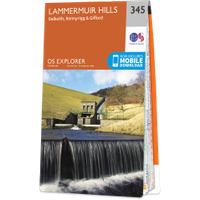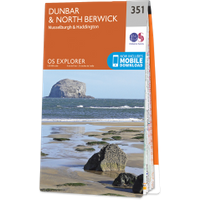Duncanlaw (site of)
The castle of Duncanlaw was the seat of the barony of Duncanlaw.
In the mid-12th century Countess Ada de Warenne, wife of David I’s son, Prince Henry, and mother of Malcolm IV and William I, granted various lands to Alexander de St Martin, the Sheriff of Haddington. These included the lands of Bara, Duncanlaw and Bangly which Uhtred, son of Gilise, had held.
Robert Russell of Duncanlaw is on record either late in the 12th century or early in the 13th century when he granted half an oxgang of land with toft and croft to Soutra hospital. He was succeeded by his son, John Russell, who reconfirmed the grant in a charter witnessed by John and Adam of Morham. John and Adam were the great-grandsons of Alexander de St Martin.
Duncanlaw later passed to the de Morham family and in 1322 Robert the Bruce granted Sir Thomas de Morham all the lands and holdings in the barony of Dunipace, that Sir Thomas Randolph had resigned, along with lands and holdings in the baronies of Duncanlaw and Morham. These were to pass to Sir John Gifford of Yester and Sir Thomas’ daughter, Euphemia Morham, upon Thomas’ death. Sir Thomas died some time before the middle of August 1327.
Sir John Gifford died around 1345 and was succeeded by his son, Sir Hugh Gifford, who married Johanna Douglas and had four daughters, Janet or Johanna, Mary or Agnes, Euphemia and Alice or Alicia. Sir Hugh died in 1366 and his daughters became co-heiresses while still children.
Johanna married Sir Thomas Hay, of Locherworth, Agnes married Eustace Maxwell of Tealing, a younger son of Sir William Maxwell of Caerlaverock, Euphemia married Dougal MacDowall of Makerstoun around 1390, and Alice married Sir Thomas Boyd of Kilmarnock.
In 1409 Euphemia resigned her share of Yester, Duncanlaw and Morham to their son, Dougal or Dungall MacDowall of Makerstoun. Eustace Maxwell exchanged his wife’s share of her inheritance with Dougal MacDowall for part of the lands of Tealing in 1427.
Robert Boyd of Kilmarnock, son of Sir Thomas and Alice Gifford, granted the quarter parts of the baronies of Yester, Duncanlaw and Morham to Sir David Hay of Yester in 1451.
In 1463 William Maxwell of Tealing and Polgavy, grandson of Eustace Maxwell and Agnes Gifford, granted Dungall MacDowall of Makerstoun his share of Yester, Duncanlaw and Morham in exchange for a quarter part of Tealing and Polgavy.
In 1474 David Hay of Locherworth pursued legal action against Dougal MacDowall of Makerstoun, his sister Elizabeth’s son, who had illegally occupied Morham Castle for the past two years.
MacDowall was the father of Andrew MacDowall of Makerstoun who married Eupheme or Euphemia Hepburn, daughter of Sir Patrick Hepburn of Dunsyre, 1st Lord Hailes, and in 1477 she was granted the half lands of Yester, Duncanlaw and Morham in liferent.
The judges decreed that Dougal MacDowall should return Morham Castle to Sir William Hay of Morham and that Sir William would hand over the lands of Linplum, Baro and Duncanlaw.
Andrew MacDowall granted half of the baronies of Yester, Duncanslaw and Morham to Patrick Hepburn, 2nd Lord Hailes, in 1490. On the 10th of November 1512 Patrick’s son, Adam Hepburn, 2nd Earl of Bothwell, gave John Hay of Yester the quarter lands of Duncanlaw, the half-lands of Yester and the patronage of Bothans church, receiving the Hays’ half of Morham, Plewlands and the patronage of Morham church in return.
Alternative names for Duncanlaw
Doncanlaw; Duncanelaw; Duncanislaw; Duncanlau; Duncanslaw











